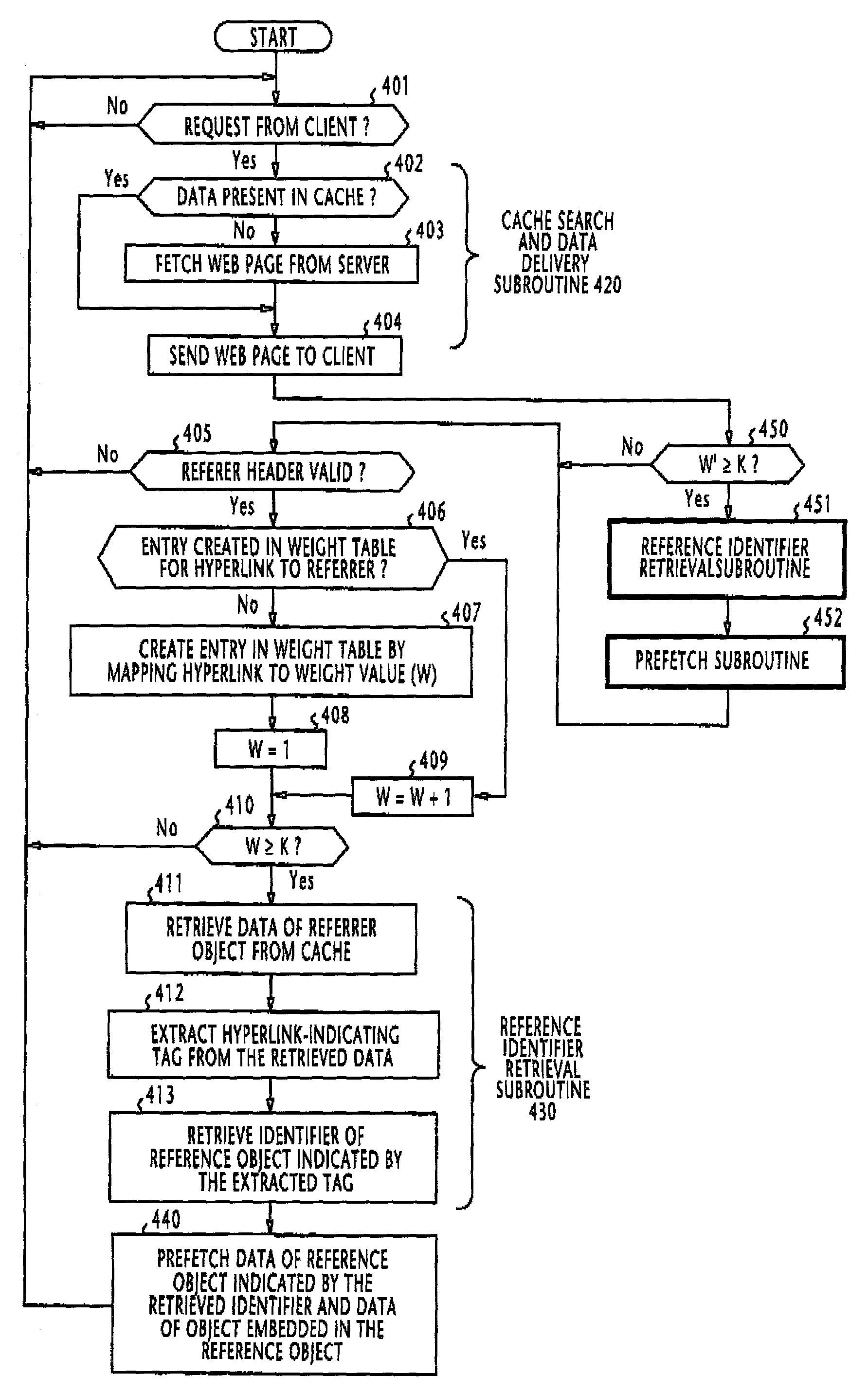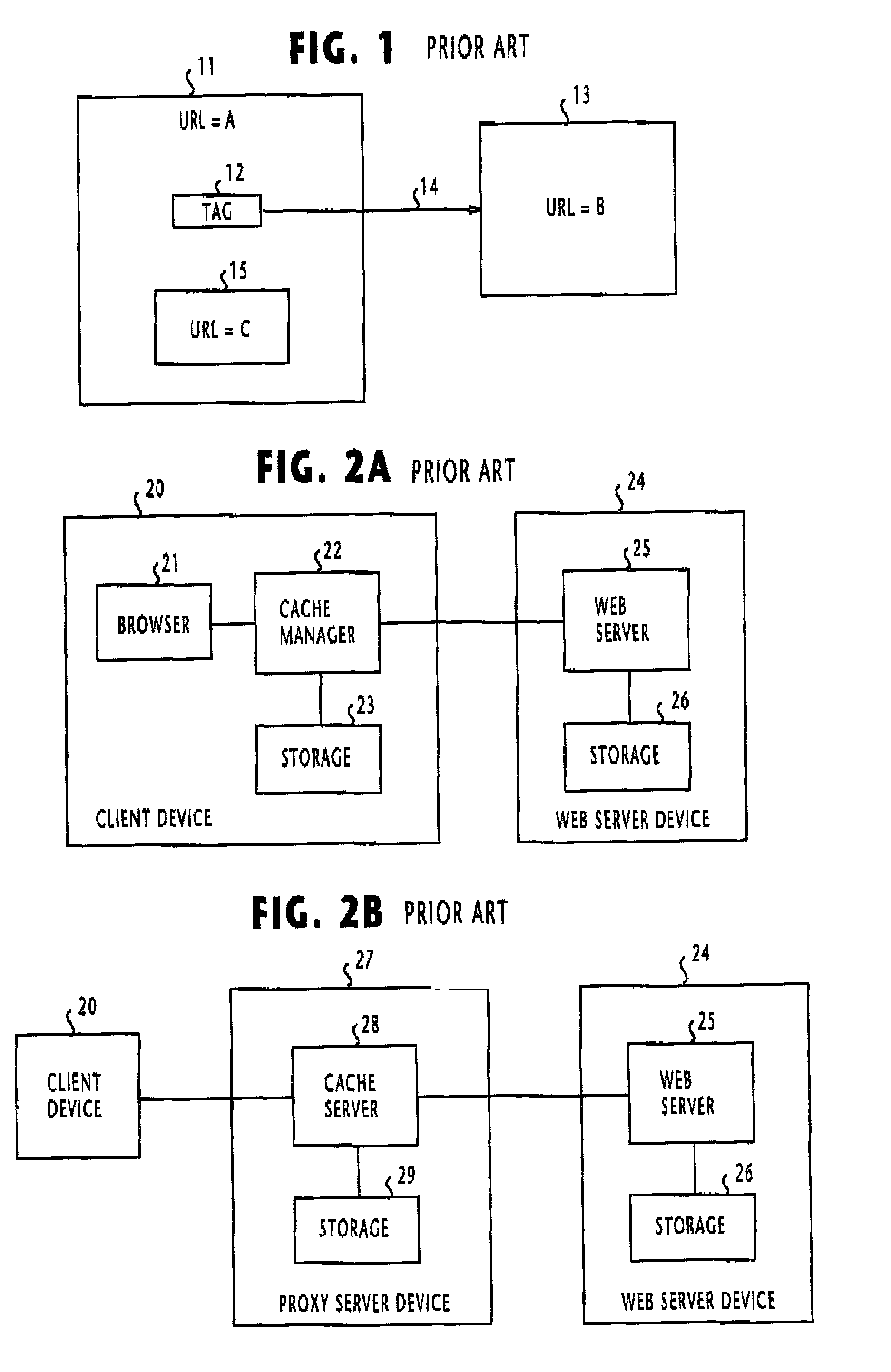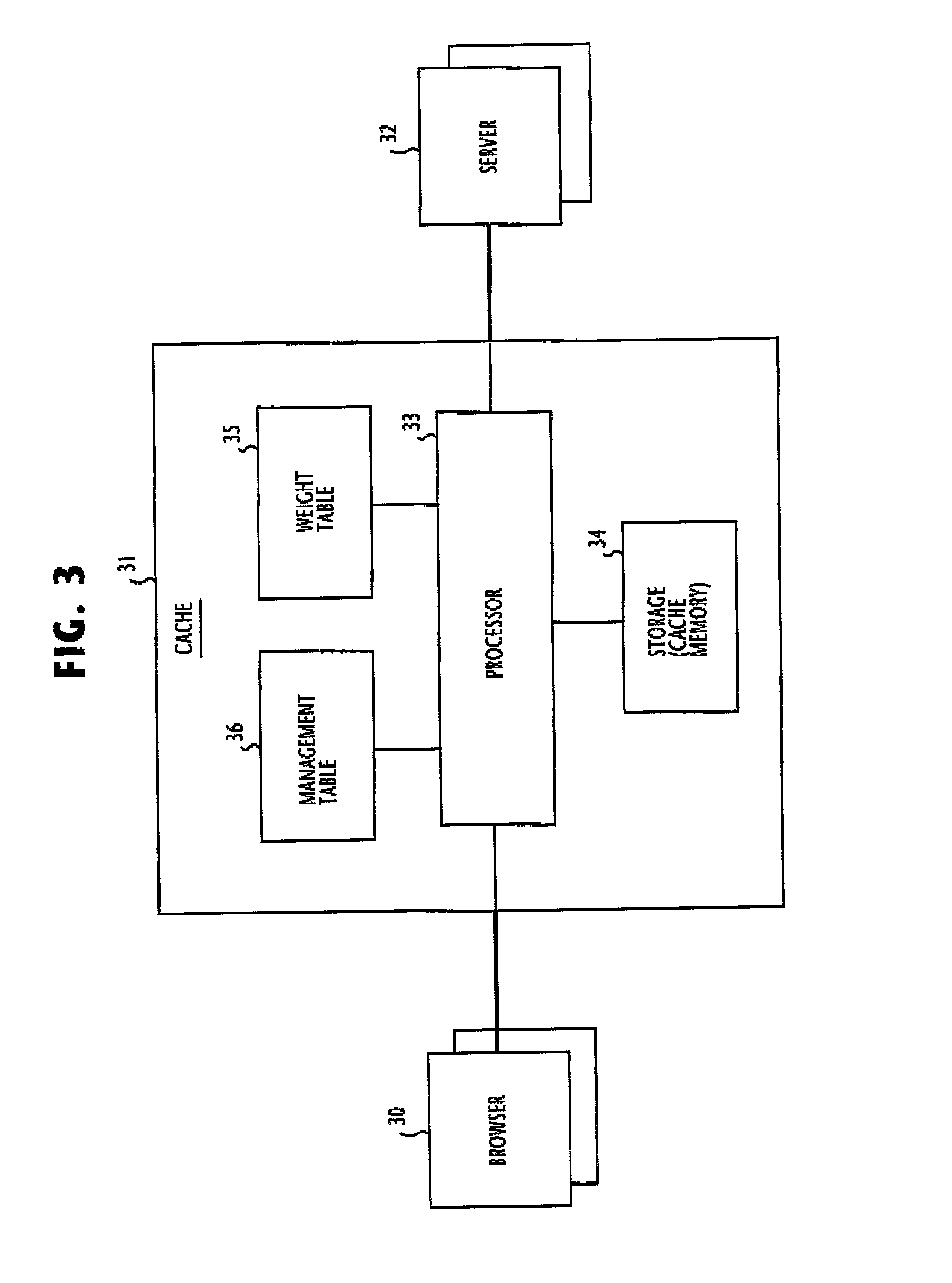Method of prefetching reference objects using weight values of referrer objects
a reference object and object technology, applied in the field of cache refresh, can solve the problems of inaccurate information transmitted from the cache, increase the system resources of proxy servers and web servers, and unnecessarily increase the communication bandwidth between the cache and the server, so as to increase the communication bandwidth
- Summary
- Abstract
- Description
- Claims
- Application Information
AI Technical Summary
Benefits of technology
Problems solved by technology
Method used
Image
Examples
Embodiment Construction
[0036]Before proceeding with the detailed description of the present invention, reference is first made to FIGS. 1 to 4 to provide an explanation of the prior art WWW (World Wide Web) service in which hyperlinks are used to prefetch web documents from a web server connected to the Internet. The web documents are maintained and served to the user in units called “objects” which are identified by such identifiers as URL (Uniform Resource Locator).
[0037]As shown in FIG. 1, each web object such as an object 15 (URL=C) is embedded in another web object 11 (URL=A) which bears a relationship to a web object 13 (URL=B) via a hyperlink 14. The hyperlink 14 is embedded within the object 11 as a hyperlink tag 12. With the web object 11 being downloaded, a user's click action on the hyperlink tag 12 causes the object 13 to be downloaded. Note that the linked objects may be located within a same server or separately on local and remote servers.
[0038]As shown in FIG. 2A, users at a client device ...
PUM
 Login to View More
Login to View More Abstract
Description
Claims
Application Information
 Login to View More
Login to View More - R&D
- Intellectual Property
- Life Sciences
- Materials
- Tech Scout
- Unparalleled Data Quality
- Higher Quality Content
- 60% Fewer Hallucinations
Browse by: Latest US Patents, China's latest patents, Technical Efficacy Thesaurus, Application Domain, Technology Topic, Popular Technical Reports.
© 2025 PatSnap. All rights reserved.Legal|Privacy policy|Modern Slavery Act Transparency Statement|Sitemap|About US| Contact US: help@patsnap.com



